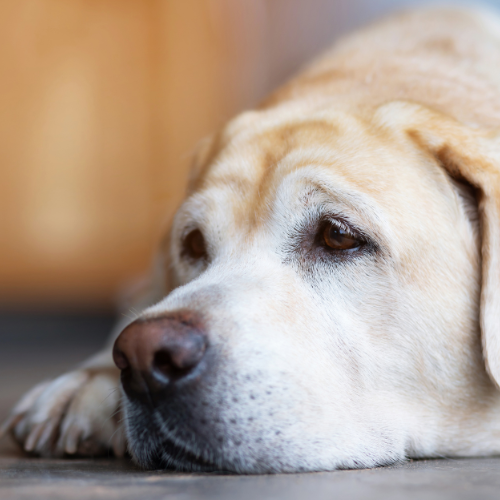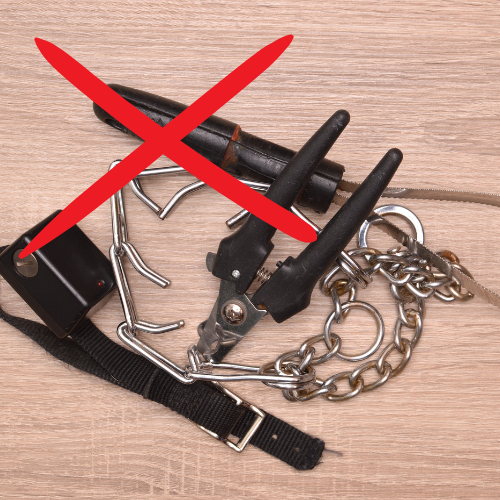You may have seen your dog moving over the ground on its bottom (or your favorite rug). Or maybe it started excessively licking its rear, or you detected an odd scent surrounding your dog. On the other hand, your best friend may suffer from constipation or pain when they attempt to defecate or even just sit down.
These actions and symptoms may suggest a problem with your pup’s anal glands and a need to reduce pain or discomfort from impaction or infection. However, there is a possibility that some dogs will continue to scoot or whine for several days after having their glands expressed. So why does the dog experience pain when its glands are being expressed?
Your pup may continue to be in discomfort after glands are removed due to swollen anal sacs. Expressions may be uncomfortable due to injections or shaving of fur. Also, your dog may have suffered an abscess or rupture.

In this article, we will discuss all of the potential causes for a dog’s days-long anal gland expression pain.
What Is Anal Gland Expression?
Most canines can secrete their anal glands when their anal sphincter tightens during a bowel movement. However, for a number of different causes, a dog’s anal glands may get blocked and not empty as they should.
If this occurs, they may swell or get blocked. Your dog likely feels some distress from this situation, as you might expect. Even worse, it may even result in infection of the anal sac. In these instances, it is essential to undertake anal gland expression on your dog.
When anal glands are manually expressed, a veterinary technician presses them until they empty. They will also examine the secretion to see whether or not it is normal and whether or not there are any indications of an infection or an abscess in the gland.
Symptoms of Anal Gland Issues
Some of the following symptoms may be present if an anal gland is affected, infected, or swollen:
- Fishy odor
- Frequent scooting or dragging
- Licking back
- Bowel pain or straining
- Swollen, red anus
- Bloody stools
Why Is My Dog in Pain After Glands Expressed?
A variety of circumstances can cause post anal gland expression discomfort in dogs. If your pup is experiencing discomfort after having his glands expressed. In that case, one of the primary causes may be that the anal gland impaction may have been too severe, and your veterinarian may not have removed all of the anal sac material.
The second potential source of discomfort, itching, or irritation after the surgery is the injection or shave that may be required. One final possibility is that your dog suffers from an abscess or a tear, both of which are painful conditions.
If the discomfort lasts longer than four days, you should have your pup reexamined by the veterinarian as soon as possible.
Why Do Dogs Need Anal Gland Expression?
The following is a list of the most typical reasons why a dog could continue to scoot after an anal gland expression surgery or feel pain as a result of the procedure:
Anal Abscesses
A painful infection of the anal glands of the anus is known as an anal abscess. The abscess causes the accumulation of pus in the anal sacs, which, if not treated, can cause the anal sacs to burst and release the pus into the rectum and anus.
It causes severe discomfort, and pups that are afflicted with it sometimes refuse to defecate because of the pain they feel whenever they pass feces. The abscess may appear as a red, inflamed swelling beneath your dog’s tail. Your pup may lick the anus, irritating to worsen.
Even if the anal gland expression operation was performed, you should still take your dog to the veterinarian if it develops a swollen, red bottom area after the surgery.
Severe Impaction
On either side of a dog’s anus is a pair of glands often referred to as anal sacs. These glands occasionally irritate or harm certain canines, particularly those with persistent diarrhea or loose feces. At times, dogs can live without anal gland expression.

If the stools continue to be loose and watery, the water tends to build in the anal sacs. These sacs have the potential to become stuffed with irritated cells over time, which can lead to an infection as well as discomfort, irritation, and itching.
In dogs with expressed anal glands, the expression treatment may not remove all material and may whine for days. In many cases, dogs with this condition may require a second or even a third anal gland expression treatment to find relief.
Razor Burn
The vet may shave the peri-anal region of hairy dog breeds like Golden Retrievers to reach the anus. The shaving process can result in a razor burn, which is one of the potential causes of your dog’s reluctance to walk, defecate, or even get up. Here are some remedies for razor burn.
The razor burn may cause discomfort, inflammation, and itching in your pup’s butt, and it may also make the butt extremely sensitive to even the smallest contact or pressure.
Dog Coughs After Barking [Why And What To Do]
How to Get Rid of Dog Mites in Your Home
My Dog Is Aggressive Towards Me but Not My Husband?
Constipation
Your dog may be constipated if it continues to gnaw and lick the anus or whine during feces. When passing through, the dry and firm stools can potentially irritate the already irritated and painful anal sacs. Even though its anal glands were expressed, your dog will still be in a lot of discomfort due to the procedure.

Doctor of Veterinary Medicine (D.V.M.) at Nation Taiwan University,Master of Science (M.S.) in Biomedical Engineering at National Taiwan University of Science and Technology




